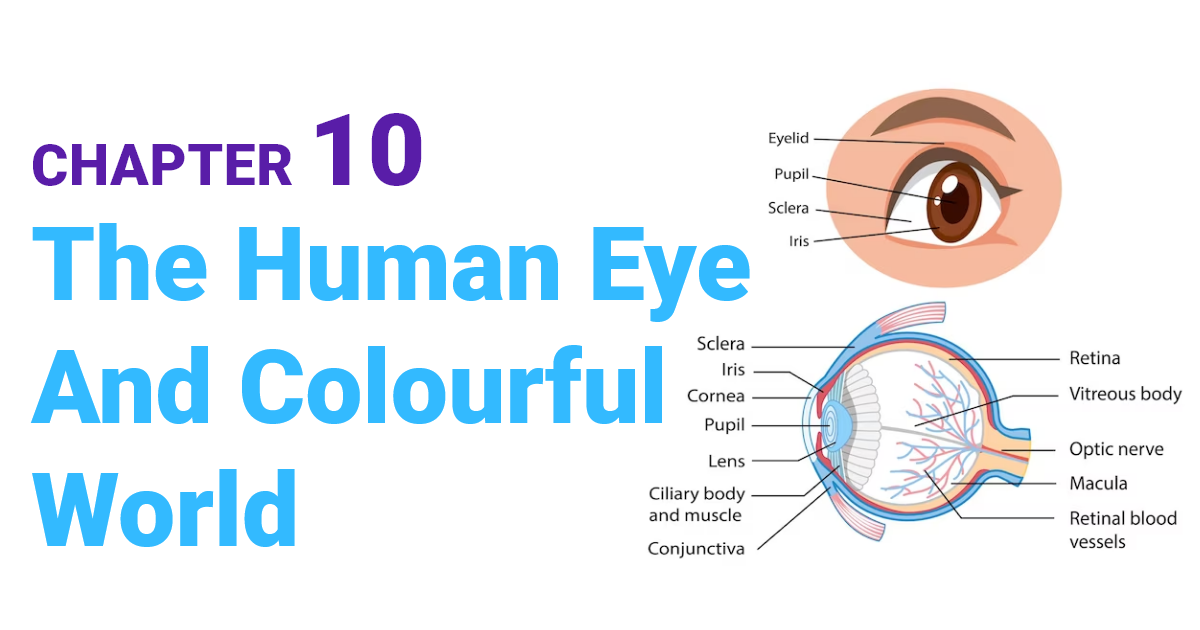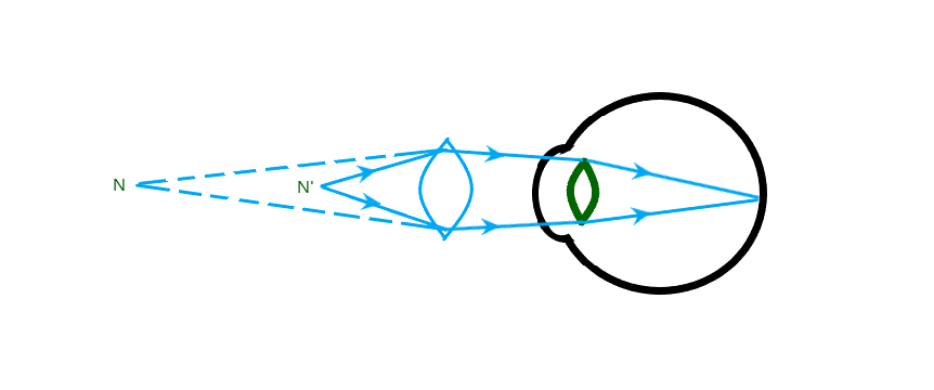NCERT Solutions for Class 10 The Human Eye and Colourful World: In this article, you will get all the information related to class 10 Science Chapter 10 NCERT Solutions. Following NCERT Class 10 Science Chapter 10 Notes will help you to score well in the class 10 board examination. Having a good understanding of the human eye and coloured world-class 10 NCERT Solution will help you to clear the Engineering competitive exam as this unit falls under Physics subject.
Each and every question in the exercise of the human eye and colour world comes with an answer and a simple step-by-step solution for the students to understand it better. So, read on to know all about NCERT Solution for class 10 Science chapter 10 Human Eye and Colour World to score well in the CBSE class 10 Board exam.

NCERT Solutions for Class 10 The Human Eye and Colourful World
Before going into the specifics of NCERT solutions for Class 10 Science Chapter 10 Human Eye and Colour World, let us have a list of the topics and sub-topics under Class 10 Science Chapter 10 NCERT solutions:
- The Human Eye
- Defects Of Vision And Their Correction
- Refraction Of Light Through A Prism
- Dispersion Of White Light By A Glass Prism
- Atmospheric Refraction
- Scattering Of Light
- Maths Important Questions for Class 10 NCERT (PDF)
- Best Notes Making Format, Ideas And Examples 2023
- GSEB Previous Year Question Papers Class 10 Solution PDF
- New NCERT Book Class 10 Download Rationalised Chapters PDF
NCERT Solutions for Class 10 The Human Eye and Colourful World Textbook Solution
Q1. The human eye can focus objects at different distances by adjusting the focal length of the eye lens. This is due to
(a) Presbyopia
(b) Accommodation
(c) Near-Sightedness
(d) Far-Sightedness
Answer: (b) Accommodation
Q2. The Human Eye forms the Image of an Object in its
(a) Cornea
(b) Iris
(c) Pupil
(d) Retina
Answer: (d) Retina
Q3. The Least Distance of distinct vision for a young adult with Normal Vision is about
(a) 25 m
(b) 2.5 cm
(c) 25 cm
(d) 2.5 m
Answer: (c) 25 cm
Q4. The Change in the Focal Length of an Eye Lens is caused by the Action of the
(a) Pupil
(b) Retina
(c) Ciliary muscles
(d) Iris
Answer: (c) Ciliary muscles
Q5. A Person needs a Lens of Power –5.5 Dioptres to correct his Distant Vision. For correcting his Near Vision he needs a Lens of Power +1.5 dioptre. What is the Focal Length of the Lens required for correcting
(i) Distant Vision
(ii) Near Vision?
Answer:
power of lens (P) = 1/(f)
f is the focal length of the lens
(i) Given P = -5.5 D
Using P = 1/f
-5.5 = 1/f
f = -0.181 m
Thus, a lens of focal length -0.181m is required for correcting distant vision.
(i) Given P = 1.5 D
Using P = 1/f
1.5 = 1/f
f = 0.66 m
Q6. The Far Point of a Myopic Person is 80 cm in front of the Eye. What is the Nature and Power of the Lens required to Correct the problem?
Answer:
Power (in diopters) = 1 / Focal Length (in meters)
the focal length is -80 cm (negative because it’s in front of the eye)
Focal Length (in meters) = -80 cm / 100 = -0.8 meters
Now, you can calculate the power of the lens:
We know that P = 1/f
P = 1/(-0.8)
= -1.25 D
Q7. Make a diagram to show how Hypermetropia is Corrected. The near point of a Hypermetropic Eye is 1 m. What is the Power of the Lens required to correct this defect? Assume that the Near Point of the Normal Eye is 25 cm.

Answer:
Given u = -25 cm
v = -100
We know that 1/v – 1/u = 1/f
-1/100 – (-1/25) = 1/f
1/f = -1/100 + 1/25 = 3/100
f = 100/3 cm = 1/3 m
Also P = 1/f
P = 1/(1/3) = 3D
Q8. Why is a Normal Eye not able to see clearly the Objects placed closer than 25 cm?
Answer:
The ability of the eye to change the focal length is limited up to a certain limit and cannot be reduced or increased below that limit. Therefore, the human eye is unable to see objects placed at a distance of more than 25 cm because 25 cm is its near point and the focal length of the eye cannot be reduced beyond 25 cm.
Q9. What happens to the Image Distance in the Eye when we Increase the Distance of an Object from the Eye?
Answer:
When we increase the distance from an object to the eye, the image remains on the retina. Therefore, increasing the distance from the object to the eye does not change the image distance in the eye. However, the eye lens increases the focal length by becoming thin.
Q10. Why do Stars Twinkle?
Answer:
The cause of the star twinkling is light refraction. Because the stars are so far away from the Earth, they are the point source of light. Light travels through the Earth’s atmosphere, which has different indices of refraction at different points. Multiple refractions occur as the light passes through the atmosphere, causing the star to flicker as a result of refraction.
Q11. Explain why the Planets do not Twinkle.
Answer:
Planets are much closer to the earth than the stars, so they appear larger because they are a collection of many points of light. The light emitted from planets also undergoes refraction, but the net effect is neutralized because of the presence of many point sources, and the flickering is invisible to the human eye, which is why planets don’t sparkle.
Q12. Why does the Sun appear Reddish Early in the Morning?
Answer:
Visible Light is made up of seven different colors. Each of these colors has a distinct wavelength. In the morning, the sun’s rays have to travel longer distances to reach the Earth. Because of this, the shorter wavelengths of the spectrum are scattered and cannot reach us. Because blue light has the shortest wavelength, it is scattered the most. Red light has the longest wavelength and is scattered the least and can reach us. This is why the sun appears reddish in the morning.

Leave a Reply